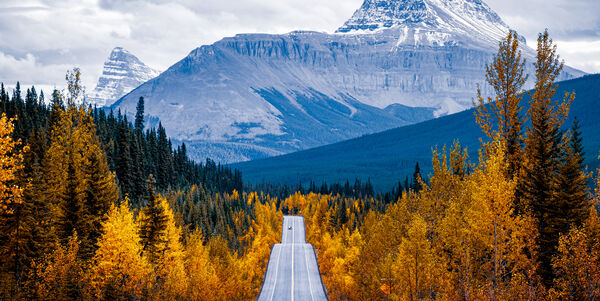What side of the road do Canadians drive on?
The first thing that you will notice when you arrive in Canada is that Canadians drive on the right side of the road and this can take a little bit of getting used to, but just take your time, start out slowly and you’ll soon get the hang of it.
Seatbelts
It is compulsory to wear a seatbelt in Canada and you risk a fine for not wearing one.
Speed Limits
Canadian speed limits are measured in kilometres per hour. The speed limit on motorways is often 100km/h (62mph) but can be as high as 120km/h in British Columbia and as low as 90km/h on Prince Edward Island. In built up areas it is usually 50kmh (30mph) but will be lower around schools.
Daytime Running Lights
Daytime running lights are present on every Canadian vehicle. Lights are required to be switched on during the daytime in some provinces – so check this when collecting your RV.
Mobile Phones
It is illegal to talk on the phone or text while driving and getting caught using your mobile phone while driving will result in a fine.
Turning Right on a Red Light
Throughout most of Canada, turning right is permitted on red lights, unless a sign indicates not to do so.
Four-Way Stop Signs
The person who arrives at the stop sign first who has right of way.
Road Signs
There are far fewer road signs in North America than there are elsewhere in the world and sometimes there is no signage at all on the roads, so Canadians often use Sat Navs which have the speed limit shown on the route, which we would suggest investing in if your vehicle doesn’t already have one.
Regional and Provincial Rules
Any driver caught speeding in Ontario at 50km/h above the speed limit can have their vehicle confiscated, towed away, and impounded for up to seven days. Be especially cautious near highway construction zones, which often dip down to temporary 80km/h speed limit.
In Alberta, be wary of inconspicuous photo radar units, usually with a police unit parked at side of the highway, but also with mobile units. Radar detectors are illegal in many provinces, so the best way not to be caught is not to speed.
Wildlife
While you’re driving around Canada it’s likely that you’ll come across some amazing animals along the way. If you see any signs warning you to the presence of animals, please do not ignore them as deer, elk, and moose can be a hazard for all vehicles and especially at night when they are more likely to be mesmerised by your headlights.
Additional caution should be taken in Maritime provinces such as Newfoundland, Prince Edward Island and Nova Scotia, where moose are overpopulated, and in Alberta where Big Horn sheep are also common.
